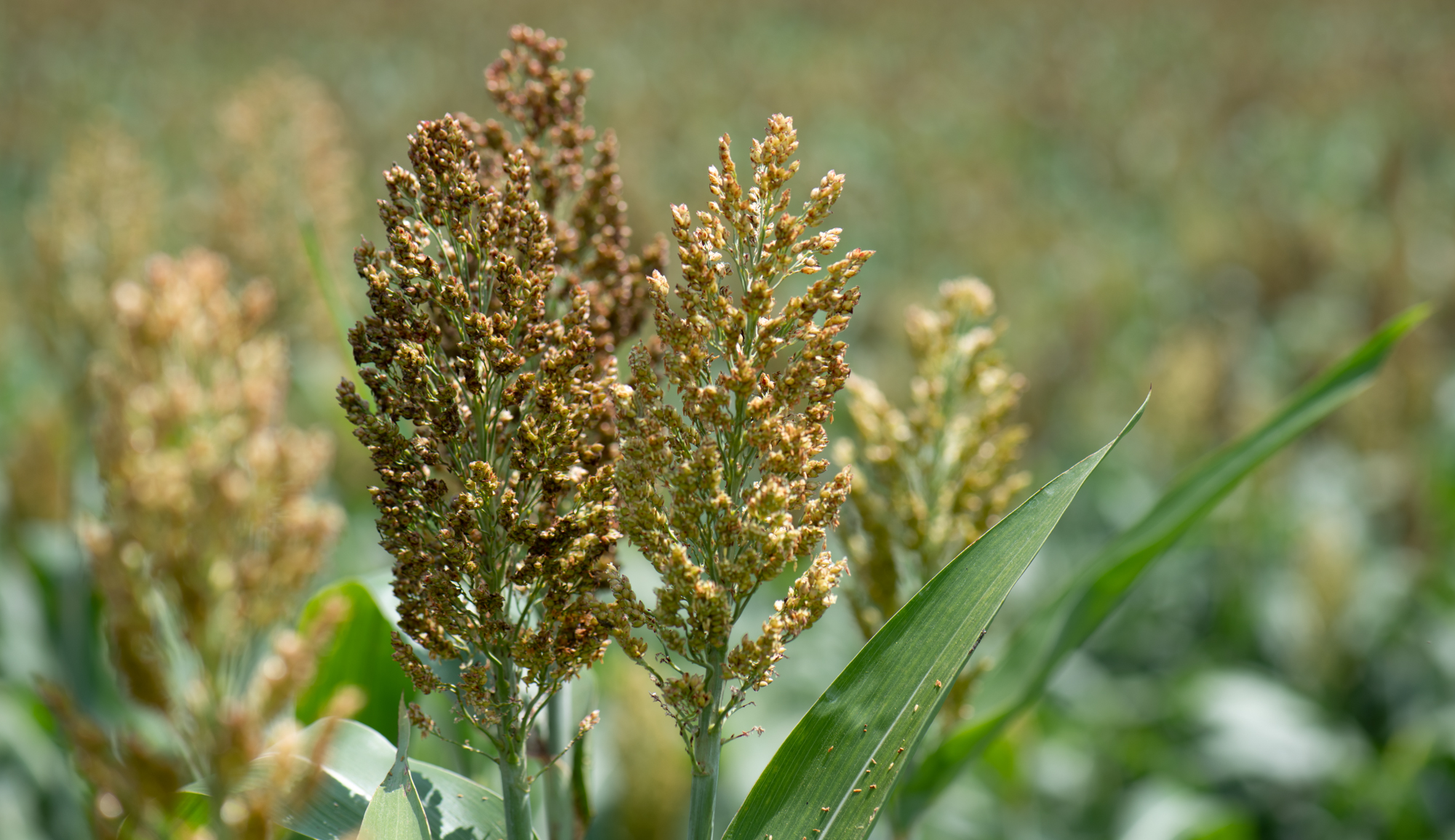Sorghum
Sorghum bicolor
Sorghum is one of the most important cereal crops in the world.
Sorghum is the fifth most important cereal crop in the world in terms of production and harvested area. This drought-tolerant crop is grown on 45 million hectares, with 75% of the area concentrated in ten countries: Sudan, India, Nigeria, Niger, USA, Mexico, Ethiopia, Burkina Faso, Mali and Chad. Sorghum is a staple crop in Asia and Africa, and is grown for both food and industrial purposes.
There are about 30 species of sorghum; S. bicolor is cultivated for grain and forage while S. halepense (Johnson grass) and S. propinquum are cultivated only for forage. Sweet varieties of S. bicolor contain a high concentration of sugar in the stalks and are grown to produce sorghum syrup, forage and silage.
Although it is mostly self-pollinating, protogyny may cause at least 5% natural cross-pollination. The genetic integrity of sorghum accessions is thus maintained by ensuring that flowers self pollinate.
Collecting
Collecting Projects
The earliest archeological evidence of the use of sorghum by humans is dated at about 9000 BP, and was found in the border between Egypt and Sudan. Sorghum has been used as a model to study the influence of cultural factors in shaping the genetic composition and the geographical distribution of crops. This is particularly relevant to understand how traditional seed-exchange systems work, and therefore to find efficient ways to diffuse improved varieties.
Use
The grain is mainly consumed in the form of flat bread or porridge. Sorghum is extremely drought tolerant, making it an excellent choice for semi-arid and dry areas.
Collections
The global strategy for the ex situ conservation of sorghum identifies three major germplasm collections based on their sampling of crop diversity, availability of characterization and evaluation data, and accessibility and availability of material and related information: ICRISAT, USDA-ARS and the National Bureau of Plant Genetic Resources in India. Genesys maintains information on almost 100,000 accessions, including those held at the USDA-ARS genebanks and ICRISAT.
COLLECTING PARTNERS
- Armenian Botanical Society (ABS)
- Genetic Resources Institute (GRI) of Azerbaijan National Academy of Sciences
- Ethiopian Biodiversity Institute (EBI)
- Plant Genetic Resources Research Institute (PGRRI, Ghana)
- Kenya Agricultural and Livestock Research Organization (KALRO, Kenya)
- National Centre for Genetic Resources and Biotechnology (NACGRAB)
- Plant Genetic Resources Institute (PGRI - Pakistan)
- Agricultural Plant Genetic Resources Conservation and Research Centre (APGRC)
- Plant Genetic Resources Centre (PGRC, Uganda)
PRE-BREEDING PARTNERS
- Institut d’Economie Rurale (IER, Mali)
- International Crops Research Institute for the Semi-Arid Tropics (ICRISAT, Mali)
- Union des Agriculteurs du Cercle de Tominian (UACT, Mali)
- Rongo University, Department of Agronomy and Environmental Sciences (DAES)
- Aminyasa Youth Group
- Ugenya Banana Farmer Group

